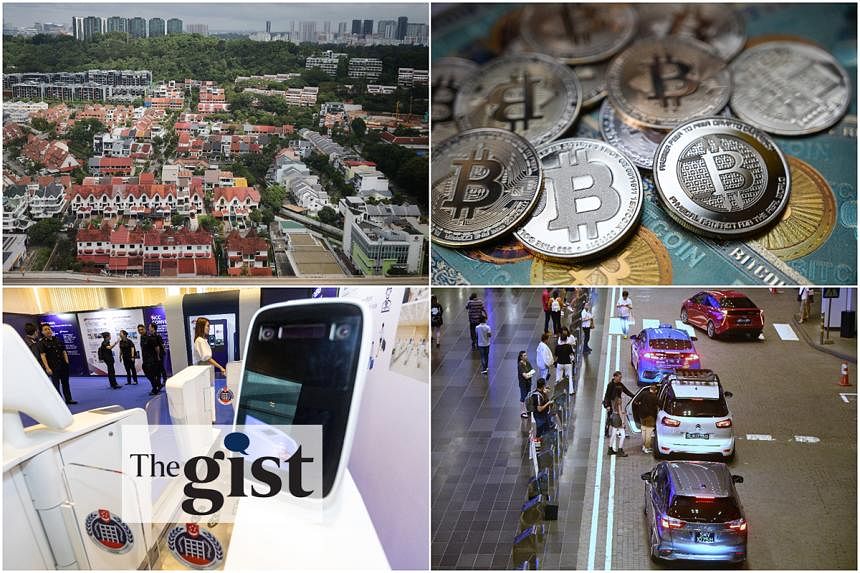SINGAPORE - With 2023 firmly in the rear-view mirror, Insight highlights what to look out for in 2024.
Business
New investment screening law
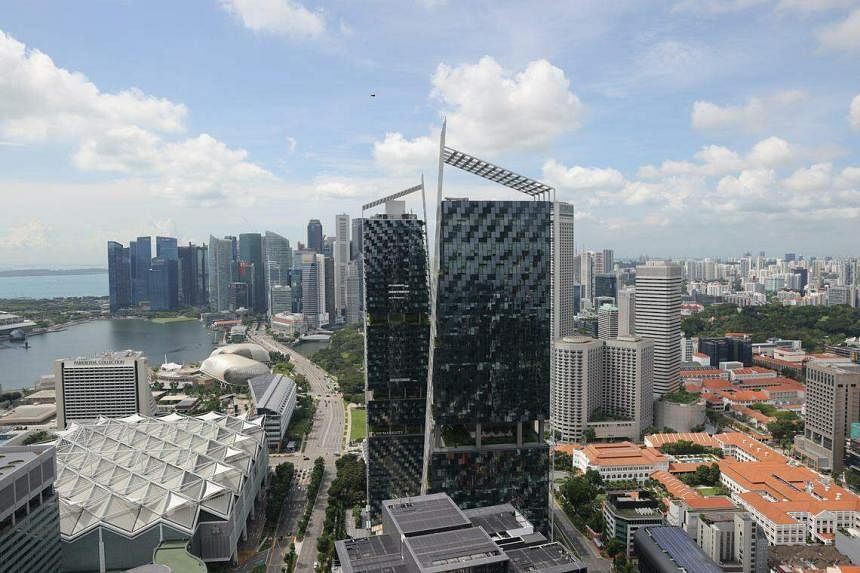
The Government introduced the Significant Investments Review Bill in November 2023 to regulate local and foreign investments in entities “critical to Singapore’s national security interests”. However, these entities have not been identified yet.
Under the proposed laws, buyers and sellers have to notify and seek approval from the Minister for Trade and Industry for certain changes in ownership or control of the entities, among other things.
Parliament is expected to debate the Bill in January 2024, with the legislation set to come into effect a few months later if it is passed.
The move comes as countries globally are stepping up scrutiny of investments to protect industries that are crucial to the proper functioning of their economies and societies.
Why it matters
Trade and Industry Minister Gan Kim Yong said it is important for Singapore to take a broader view on how to effectively manage the risks that may arise from significant investments in some of these critical entities.
Although most critical entities here are already adequately covered by existing legislation, there are some that may not be, or in sectors not covered by those rules, he noted.
In a crisis, the current legal requirements imposed on these entities may not be adequate to ensure their business continuity, he added.
Other jurisdictions including Australia, China, Ireland, Britain, Japan and the United States have similar investment screening policies.
Observers told Insight that the measures provide levers to ensure the security and reliability of entities critical to the functioning of Singapore’s economy even when those with ill intent towards the Republic look to use economic levers to achieve their aims.
New cryptocurrency rules for consumers

Retail customers dealing with Singapore-regulated providers of digital payment token (DPT) services will not be allowed to buy cryptocurrencies with local credit cards.
They will also have to undergo risk awareness assessments of trading in DPTs, prices of which are volatile.
These measures are among the list of conditions set out by the Monetary Authority of Singapore (MAS) on Nov 23, 2023, as it finalises its proposed rules for DPT service providers here.
The measures, to take effect in phases from mid-2024 following legislative amendments, also state that crypto service providers are not to offer incentives such as free tokens to court retail users, or offer financing, margin or leverage transactions as well.
Why it matters
Market observers said the measures governing the cryptocurrency sector here sought to balance the need for retail investor safeguards with companies’ worries.
The moves are set to ring-fence Singapore customers’ assets, and avoid a repeat of the huge investor losses chalked up in 2022 when cryptocurrency firms went bust.
One observer said the inclusion of DPTs in determining an investor’s net worth as an accredited investor will positively impact the traditional finance markets governed under the Securities and Futures Act. The move will pave the way for DPTs to be progressively integrated into traditional financial systems and, in turn, encourage a wider adoption of digital assets, he added.
Crime/security
Money laundering probe ongoing
Investigations into the 10 accused involved in Singapore’s largest case of money laundering are ongoing. Eight persons remain on the run, while another 12 are assisting with investigations.
Many of those on the authorities’ watch list have shared interests in properties and companies in Singapore and overseas, and also hold passports from multiple countries.
In all, over $2.8 billion worth of assets have been seized or issued with prohibition of disposal orders by the authorities so far, including properties, vehicles, liquor and wine, and cryptocurrency.
Why it matters
The nine men and one woman, all originally from China, are still undergoing court proceedings, with more details expected to emerge in 2024.
In October 2023, it was announced that an inter-ministerial committee would be set up to review Singapore’s financial system and strengthen its anti-money laundering regime.
Proposed laws to better detect illicit activities conducted by companies incorporated in Singapore will be tabled in Parliament in early 2024.
Passport-free clearance to be rolled out at checkpoints
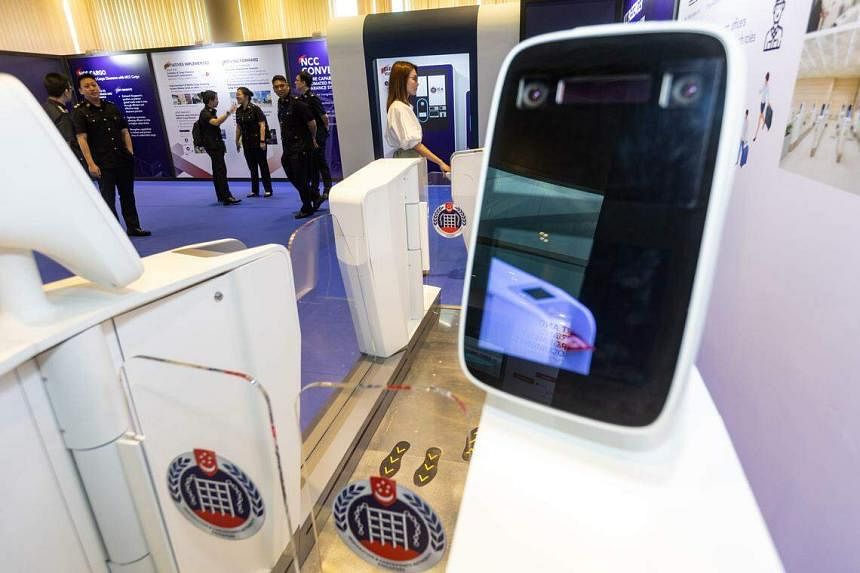
Singapore residents and visitors leaving the Republic will be able to clear checkpoints without having to use their passports from the first quarter of 2024.
Instead, they can clear immigration via QR code at land checkpoints if travelling by car, or the new contactless Automated Border Control System (ABCS) at passenger halls.
Manual counters at all passenger halls at checkpoints will be progressively replaced by about 800 automated lanes using the new system from the first quarter.
Why it matters
The checkpoints are expected to get busier, posing more challenges for the Immigration and Checkpoints Authority (ICA).
Each day, about 400,000 people cross the land checkpoints in Woodlands and Tuas. The automated system is meant to address a projected manpower crunch in future as Singapore’s population ages.
Education
Removal of Normal and Express labels
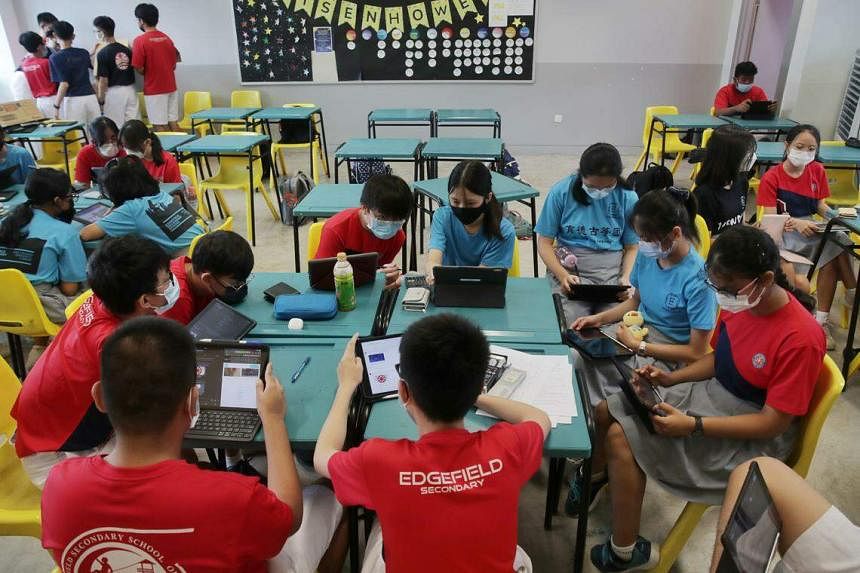
With the roll-out of full subject-based banding across all secondary schools in 2024, the Express, Normal (Academic) and Normal (Technical) streams have been phased out.
Instead, subject levels will be known as G1, G2, G3 (G stands for General), which are broadly mapped from Normal (Technical), Normal (Academic) and Express standards respectively.
Students in a form class take six non-academic subjects, such as art and physical education, together. For subjects like English, mathematics or history, they will attend lessons in different classes based on their ability for each subject.
Why it matters
The move gives students greater flexibility to take different subjects at a more or less demanding level based on their strengths, interests and learning needs.
Students who perform well in certain subjects would be able to take classes at a more demanding level in the middle of the year or the following year, compared with the old system in which they had to wait till the end of the school year to be transferred.
Students in schools that have implemented this system have said it allows them to stretch themselves in subjects they are strong in.
SIT moves to Punggol; UAS to open
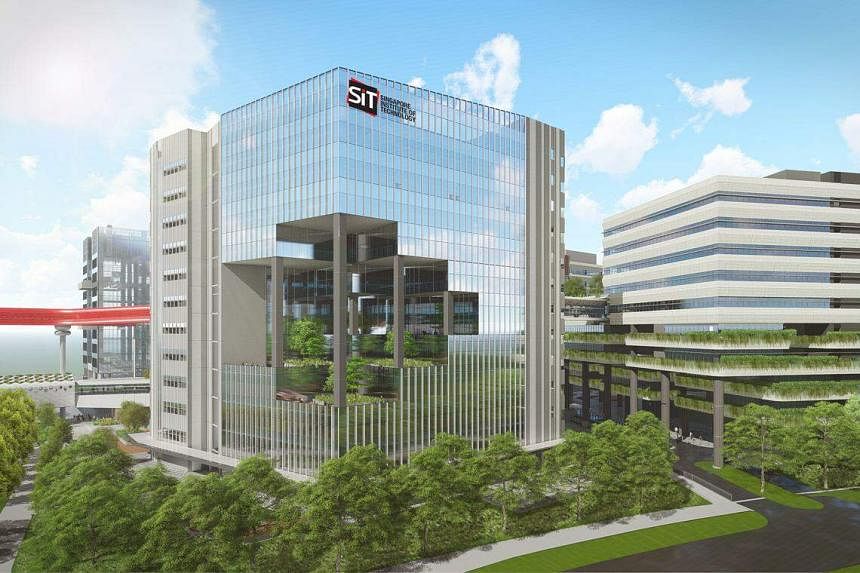
Singapore Institute of Technology (SIT) students will start classes at its new 91,000 sq m campus in Punggol in September 2024.
The campus, located within JTC’s Punggol Digital District, is expected to be operational by the second half of 2024 and can accommodate 12,000 students.
Separately, the new University of the Arts Singapore (UAS) will take in its first cohort of students across undergraduate degrees and Master of Arts programmes in August 2024.
UAS, formed by an alliance between Lasalle College of the Arts and the Nanyang Academy of Fine Arts, is expecting an intake of more than 700 students.
Why it matters
SIT’s new campus location in the Punggol Digital District presents more opportunities to work with companies, as it makes a name for itself as Singapore’s university for industry, said SIT president Chua Kee Chaing.
SIT is also looking at how it can add value to Punggol and Sengkang towns, he added.
Meanwhile, Education Minister Chan Chun Sing said the UAS is an important pursuit as societies increasingly recognise the value of the arts, and economies value creative thinking.
Housing
New HDB classification
From the second half of 2024, Build-To-Order (BTO) flats in choicer locations will be launched under the Prime and Plus categories, which have extra subsidies applied to keep prices affordable.
These flats come with stricter resale conditions, including a 10-year minimum occupation period (MOP). Resale buyers of Prime and Plus flats will be subject to an income ceiling, which is currently $14,000 a month.
The new categories are:
- Prime: Flats located in the choicest locations close to the city centre. These flats receive the most subsidies, and the subsidy clawback upon resale has been typically set at 6 per cent. The latest two BTO projects in prime locations have an 8 per cent clawback.
- Plus: Flats located in attractive sites within each region across Singapore, such as near an MRT station or town centre. The subsidy clawback rate will be lower than for Prime flats due to the smaller subsidy amount.
- Standard: These flats come with a five-year MOP and have no income ceiling for buyers on resale. They will continue to form the bulk of the housing supply.
Why it matters
The new model will replace the Housing Board’s current framework of classifying estates as either mature or non-mature, which has been in place since 1992.
It will allow HDB to keep flats in more attractive locations affordable by providing more subsidies, and curb the “lottery effect” of securing such flats by imposing stricter resale conditions. The income ceiling on resale buyers is meant to moderate resale flat prices, and help maintain a better social mix in the longer term.
The Plus and Prime categories should deter speculative buyers who view their flat as a short-term investment, property analysts said.
Manpower
Re-employment support
Interim financial support will be given to involuntarily unemployed workers who pursue skills upgrading to help them get back on their feet.
In the Forward Singapore report, the Government said features of the scheme could include requiring workers to actively search for jobs every month, targeted assistance for those in the lower and middle-income groups and “appropriately sized” benefits to preserve the incentive to return to the workforce.
These benefits will be complemented by existing social assistance schemes for more vulnerable households and training allowance from SkillsFuture for those who undertake substantial reskilling.
More details are set to be announced in Budget 2024.
Why it matters
With rapid technological change and business restructuring, there is a higher risk of involuntary unemployment arising from a mismatch between the demand for skills and the skills which workers possess, said Associate Professor Terence Ho at the Lee Kuan Yew School of Public Policy.
This means that in future, more Singaporeans may find themselves displaced from jobs and having to tide over periods of involuntary unemployment, he added.
Observers said the support scheme could prove a landmark change to Singapore’s social safety net.
Prof Ho said existing support measures are subject to strict qualifying criteria.
For instance, ComCare Short-to-Medium Term assistance is open only to those from low-income households who have little or no family support, savings or assets to rely on for daily needs.
“The re-employment support scheme would potentially benefit many more unemployed workers who would not meet the qualifying criteria for ComCare.”
Retirement adequacy moves
A slew of moves to boost retirement adequacy for Singaporeans will either kick in or ramp up in 2024.
Lower- and middle-income Singaporeans born in 1973 or earlier will receive various top-ups to their Central Provident Fund (CPF) accounts to help them in retirement under the Majulah Package.
The package includes the Earn and Save Bonus – an annual top-up of between $400 and $1,000 as long as a senior person remains in the workforce.
Regardless of their employment status, those whose CPF balances have not reached the Basic Retirement Sum (BRS) will receive a one-time Retirement Savings Bonus of between $1,000 and $1,500 through the package.
The package’s third component is a one-off MediSave Bonus of between $500 and $1,000 to offset healthcare costs.
More details on the package will be announced in Budget 2024 on Feb 16.
CPF contributions are also on the cards for cabbies, private-hire car drivers and freelance delivery workers who use apps.
In a major move to uplift more than 73,000 platform workers here, CPF contributions will be made mandatory for workers aged below 30 in 2024 and companies that connect them with gigs, while older workers can opt in to the scheme.
Contributions will be increased in steps from the latter half of 2024 till 2028.
The CPF monthly salary ceiling, which caps the quantum of ordinary wages that would attract CPF contributions, rose from $6,300 to $6,800 on Jan 1, 2024.
On the same day, CPF contribution rates for senior workers aged 55 and above to 70 years increased by 1 to 1.5 percentage points.
Why it matters
The Earn and Save Bonus – plus accumulated interest over time – aims to help seniors who do not yet meet their BRS to close the gap faster.
Associate Professor Walter Theseira of the Singapore University of Social Sciences (SUSS) said those in the age group targeted by this bonus are generally either working or still capable of work, but also often have fairly low CPF savings.
“CPF savings are likely to be particularly low for women, who were often full-time homemakers in this generation, or for those working in informal work which was more common in the past.
“The Earn and Save Bonus will encourage them to engage in formal work during this last part of their working lives, which will make a difference to their retirement income,” said Prof Theseira.
“If we assume that the youngest qualifying senior receives $1,000 per year for 15 years until the CPF Life draw-down age of 65, the cumulative sum of this stream earning 4 per cent per annum in either the Special Account or Retirement Account would be $20,024,” noted Professor Benedict Koh from Singapore Management University.
Meanwhile, the maximum payout for the MediSave Bonus is expected to cover four to five years’ worth of withdrawals for chronic diseases for Singaporeans in need.
Prof Theseira said the CPF changes for platform workers will likely lead to lower burden on family members and society to support their retirement, while improving housing affordability for younger platform workers too.
Meanwhile, the increased salary ceiling will likely impact workers who already have substantial CPF savings, and is instead an adjustment based on the prevailing cost of living or wages, he added.
Mr Christopher Gee of the Institute of Policy Studies (IPS) said the policy changes are coming now and at an accelerating pace to address the implications of Singapore’s rapidly ageing population on retirement adequacy, especially of those with less accumulated savings.
Workplace fairness law
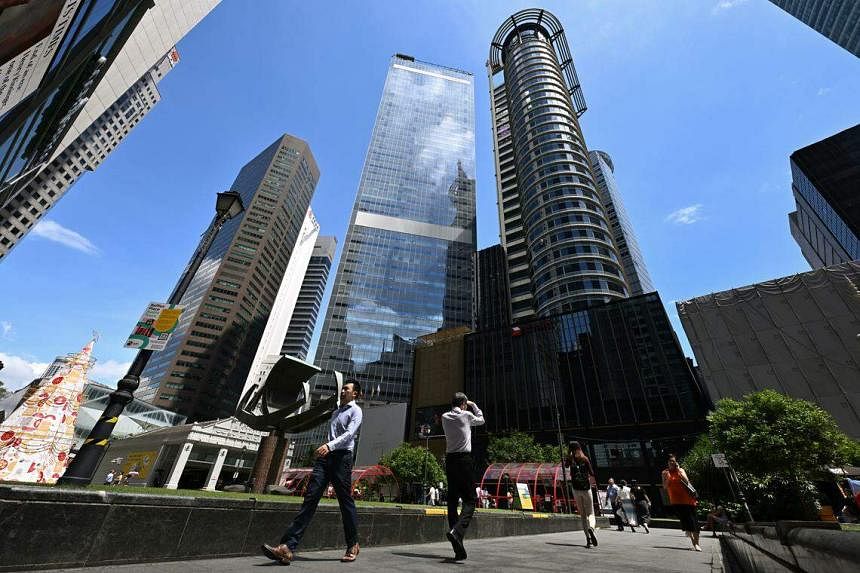
Singapore’s first workplace fairness law is set to be passed in the second half of 2024.
The legal framework will draw from 22 recommendations released in August by a tripartite committee comprising the Ministry of Manpower (MOM), National Trades Union Congress and Singapore National Employers Federation.
Discrimination will be defined under the legislation as “making an adverse employment decision because of any protected characteristic” and the laws will set out these characteristics for protection: age, sex, family status, race, nationality and mental health.
Employer retaliation against those who report workplace discrimination or harassment will also be banned, among other moves to raise worker protections.
However, exceptions are allowed if these characteristics need to be considered for a genuine and reasonable job requirement, like conformity to a religion for a role in a religious organisation.
Why it matters
The protected traits account for over 95 per cent of discrimination complaints received by the Tripartite Alliance for Fair and Progressive Employment Practices and MOM from 2018 to 2022.
Affected employees could take their case to the Employment Claims Tribunal.
If the case is ruled in their favour, non-unionised workers may be awarded up to $20,000 in compensation, while unionised workers can receive up to $30,000.
The move builds on the current Tripartite Guidelines on Fair Employment Practices, and observers deemed the framework a step forward in worker protection.
“Internationally, countries see value in anti-discrimination legislation as it firmly clarifies societal consensus that discrimination is unacceptable practice,” said Dr Mathew Mathews, head of the Social Lab and principal research fellow at IPS.
Politics
Leadership handover
Prime Minister Lee Hsien Loong is expected to hand over the reins to Deputy Prime Minister Lawrence Wong by the People’s Action Party’s 70th birthday in November 2024.
PM Lee said at the PAP’s biennial convention in November that he has “full confidence in Lawrence and his team and there is no reason to delay the political transition”.
The next general election (GE) has to be held by November 2025.
Why it matters
DPM Wong is set to be Singapore’s fourth PM, and will be leading the party in the next election.
The transition marks the shift to the country’s fourth generation of leaders, who have been taking on greater responsibilities, especially during the Covid-19 pandemic.
PM Lee said after the handover, he will be at DPM Wong’s disposal and “will go wherever he thinks I can be useful”.
Iswaran’s corruption probe
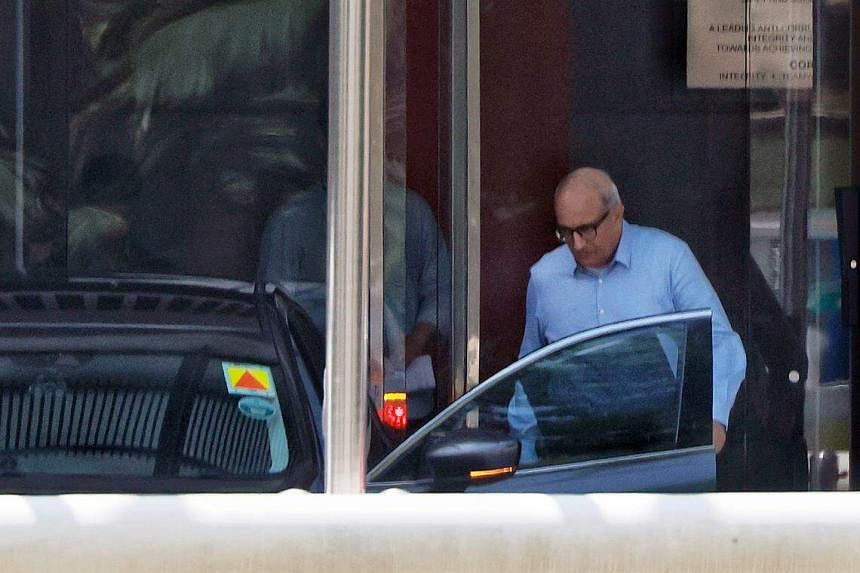
The corruption probe against Transport Minister S. Iswaran continues.
Mr Iswaran, who is an MP for West Coast GRC, was arrested by the Corrupt Practices Investigation Bureau (CPIB) on July 11 and is out on bail.
He has been placed on leave of absence and had his monthly pay reduced to $8,500 until further notice, though he continues to draw his MP allowance.
Why it matters
The probe stemmed from an earlier unrelated investigation on a separate matter. However, further details on what Mr Iswaran is being investigated for has not been shared.
With a general election looming, the details and subsequent conclusion of the probe could have implications on how well the electorate consider the matter handled.
Political watchers have said that the probe is a “severe reputational hit” for the PAP and a Government that has long prided itself on incorruptibility and high standards of probity in governance.
Social
More early intervention support for special needs kids

Children aged below seven with developmental needs, and who require medium to high levels of support, can get more timely intervention with the addition of more early intervention places in 2024.
More centres will be set up to offer the Early Intervention Programme for Infants and Children (Eipic) or the Enhanced Pilot for Private Intervention Providers (PPIP) programme.
The PPIP programme offers families more choices of early intervention programmes for children who need medium to high levels of support, and who have been referred to Eipic. It complements Eipic, which is run by social service agencies.
The number of PPIP places will grow to 1,200 spots by March 2024, up from 400 in 2023.
In all, 1,400 early intervention places will be added by 2025.
Why it matters
In March 2022, Minister for Social and Family Development Masagos Zulkifli said the waiting time for early intervention had gone up over the past two years, because of a higher number of hospital referrals to government-funded centres and the impact of Covid-19.
Among PPIP centres that had a wait list, it took families about four to 12 months to enrol in the programme in 2021. More places added to the programmes means wait times could be reduced.
Changes to support families
- Doubling of paternity leave: Working fathers of Singaporean children born on or after Jan 1 can take four weeks of government-paid paternity leave, up from two weeks previously, depending on their employers.
- Doubling of unpaid infant-care leave: Unpaid infant-care leave will increase from six days per year for each parent to 12 days per year, in the child’s first two years. This will apply from Jan 1 for working parents with Singaporean children aged below two years old.
- Fixed dollar tax relief for working mothers: The Working Mother’s Child Relief, which aims to encourage women to stay in the workforce after having children, will be changed from a percentage of the mother’s earned income to a fixed dollar relief, for Singaporean children born or adopted on or after Jan 1.
Why it matters
The doubling of paternity leave and unpaid infant-care leave gives parents more time to bond with and care for their newborn, or to settle caregiving arrangements, said DPM Wong.
Taken together, these enhancements will increase parental leave for a working couple from 22 weeks to up to 26 weeks in their child’s first year.
The fixed dollar relief may translate into a lower claim for working mothers with an annual earned income of about $54,000 or more, observers noted. On the other hand, lower-income working mothers can claim a higher fixed quantum of relief.
Taxes
Carbon tax increase
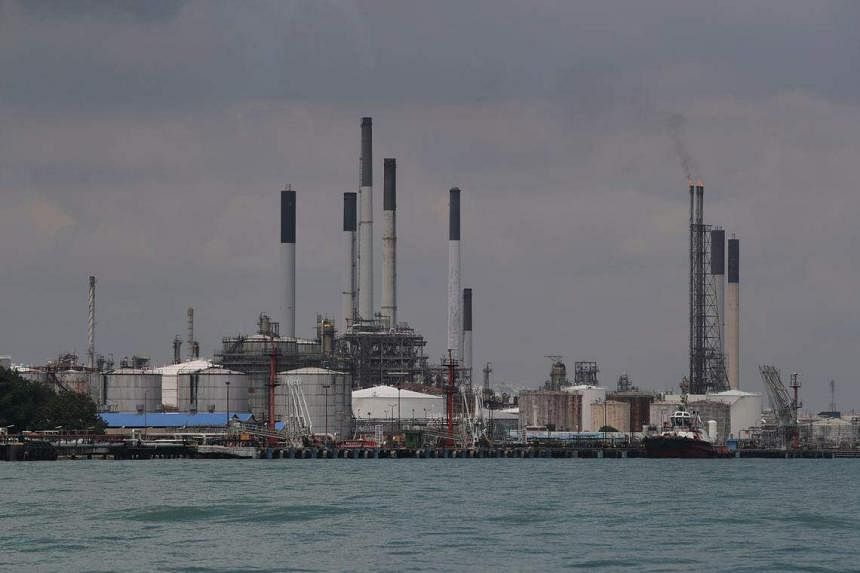
Singapore’s carbon tax will rise to $25 per tonne of emissions in 2024, up from the $5 per tonne from 2019 to 2023.
The tax will be raised further to $45 per tonne of emissions in 2026, and eventually to between $50 and $80 per tonne of emissions by 2030 as part of wider efforts to deal with the negative effects of emitting carbon dioxide, which include global warming.
Why it matters
The National Climate Change Secretariat calculated that every increase of $5 in carbon tax could cause household electricity tariffs to rise by a corresponding 1 per cent. This means electricity bills could go up by about 4 per cent in 2024.
The revenue from the carbon tax will be used to help households and businesses make a transition to a greener economy and greener living, said Senior Minister Teo Chee Hean on Dec 5.
GST raised to 9 per cent
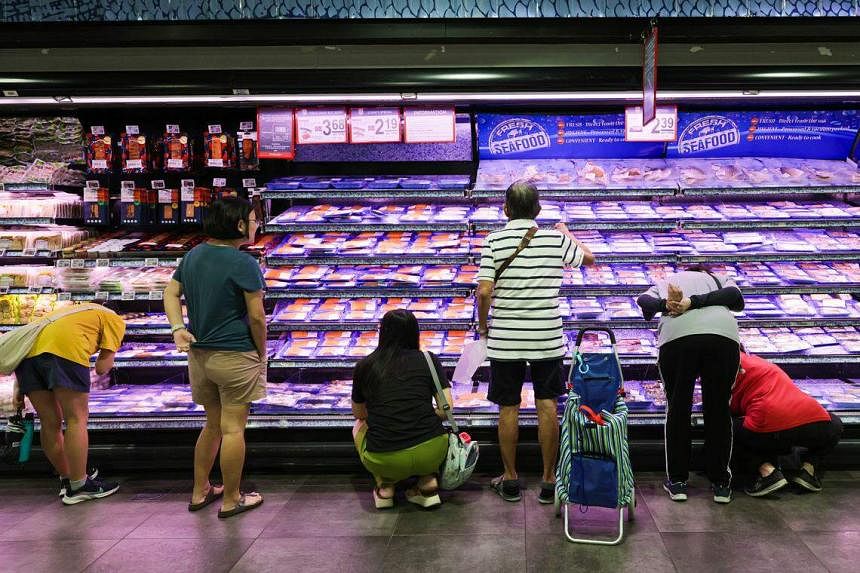
The goods and services tax (GST) rate went up from 8 per cent to 9 per cent at the start of 2024 – completing the second stage of the rate hike that was first announced in 2018.
The Government has stuck to its guns about raising the GST, although it previously held off the hike that was planned for 2021 as Singapore grappled with the ongoing pandemic, the uncertain economy and inflation.
The GST hike comes after a series of price increases to utilities, among others, in the past few months.
DPM Wong said in his maiden Budget speech in 2022 that the revenue will go towards supporting healthcare expenditure and taking care of senior citizens, as other areas of social spending rise as well.
Why it matters
The GST hike, which comes amid other price increases, has been a political hot potato for the ruling party. Cost-of-living pressures received a lengthy airing in Parliament last November.
All eyes are now on Budget 2024 to see what support measures the Government has in store, after DPM Wong said on Jan 3 that the Ministry of Finance is studying ways to provide additional support for Singaporeans.
Higher property taxes
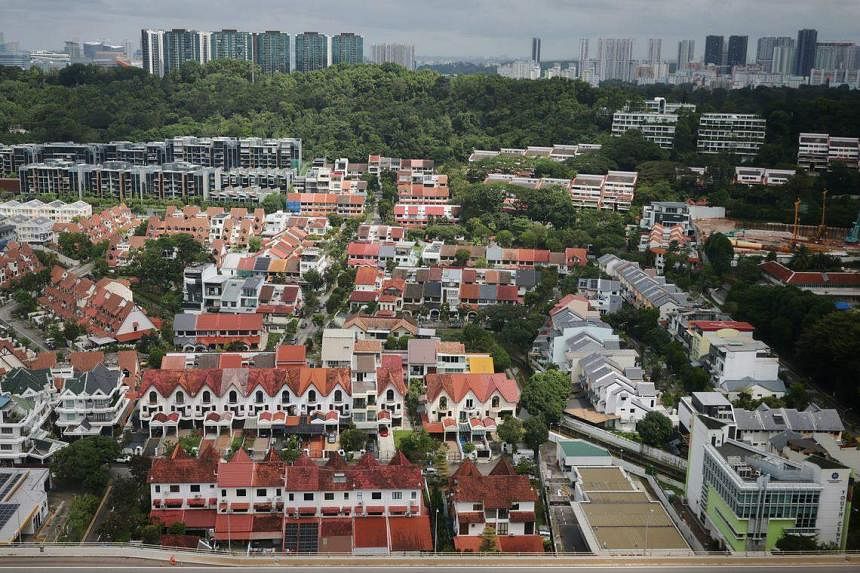
Property taxes for most home owners will go up in 2024, in tandem with the annual value of HDB flats and most private residential properties being raised from Jan 1.
This is part of the Inland Revenue Authority of Singapore’s (Iras) yearly review of properties to calculate how much taxes should be paid.
The second and final step of property tax rate increases also took effect from Jan 1.
- Residential properties not occupied by their owners, including investment properties: Property tax rates were increased to 12 per cent to 36 per cent, compared with 11 per cent to 27 per cent previously.
- Owner-occupied homes with an annual value of more than $30,000: Property tax rates were raised to 6 per cent to 32 per cent, from 5 per cent to 23 per cent.
- All owner-occupied HDB flats are not affected.
The Government will provide a one-off rebate for all owner-occupied homes to help cushion the impact of the tax increase amid cost-of-living concerns.
Owner-occupiers of one- and two-room flats will get a 100 per cent rebate, while those with four-room units will get a 50 per cent rebate. Executive flat owner-occupiers will receive a 30 per cent rebate, while those with private properties will get a 15 per cent rebate, capped at $1,000.
Why it matters
The higher property taxes will affect investment properties and larger homes, such as luxury condominiums and landed properties, the most.
Coupled with high additional buyer’s stamp duty rates for investment properties, elevated interest rates and higher maintenance fees, investors are set to face higher costs, property analysts noted.
While some landlords may try to pass these costs on to tenants, the increased competition for rentals may make it difficult for them to do so. As a result, analysts expect landlords’ rental income to be dampened.
It is not expected to significantly impact property prices.
Transport
Opening of Stage 4 of Thomson-East Coast Line
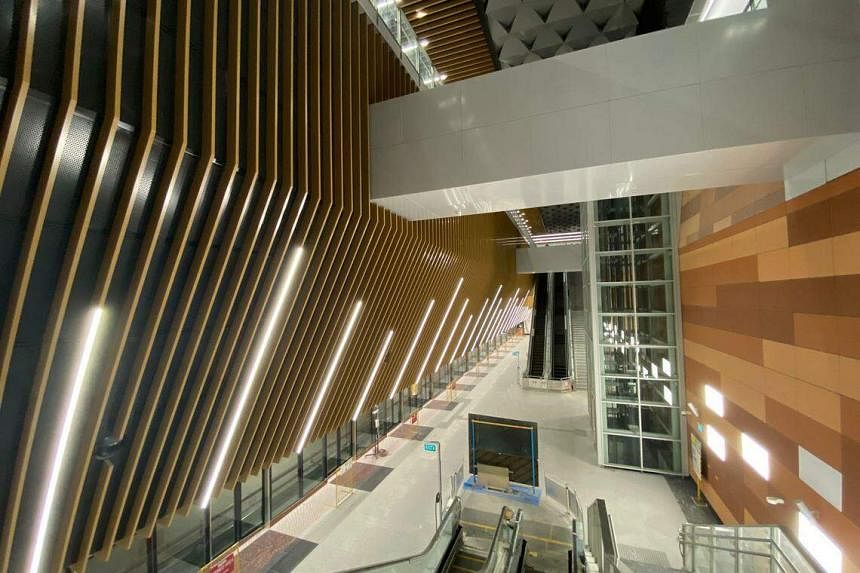
The Land Transport Authority (LTA) will begin handing over seven stations along Stage 4 of the Thomson-East Coast Line (TEL) to operator SMRT in early 2024.
Located in eastern Singapore, the stations are: Tanjong Rhu, Katong Park, Tanjong Katong, Marine Parade, Marine Terrace, Siglap and Bayshore.
The last stop in Stage 4, the Founders’ Memorial, will start operations in tandem with the memorial’s expected opening in 2027.
SMRT will carry out further tests before the line is opened for passenger service – these typically take between three and six months.
For TEL Stage 3, LTA handed over the stations to SMRT on Aug 17, 2022, and the line opened on Nov 13 that year.
Why it matters
Residents in the East Coast area can look forward to a faster journey to Thomson, Orchard and the Central Business District with the opening of Stage 4 of the TEL.
The TEL is Singapore’s sixth MRT line and will be 43km long with 32 stations, eight of which are interchange stations.
It inches closer to completion, with Stage 5 comprising Bedok South and Sungei Bedok stations slated to open in 2025.
Review of point-to-point industry
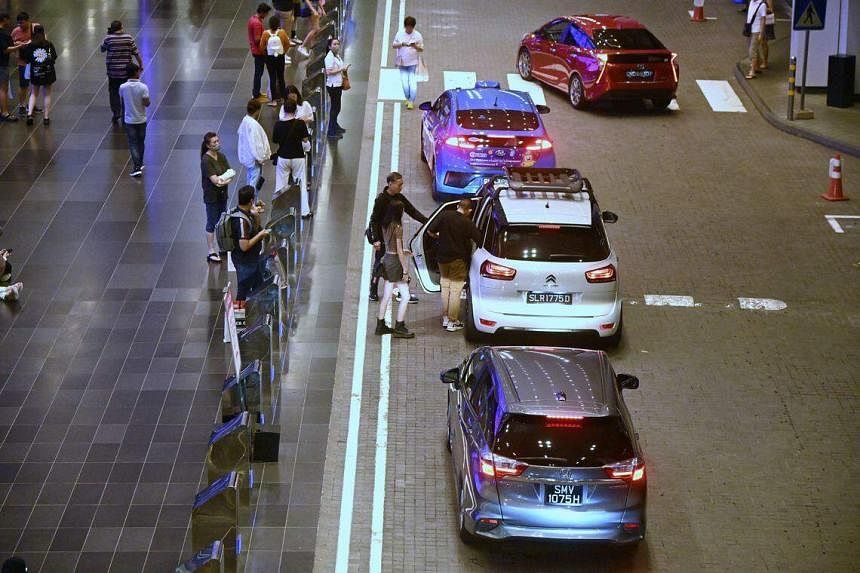
The authorities are reviewing the way that taxi and ride-hailing operators conduct their business, including the availability of rides amid increased ridership.
The review of the point-to-point transport industry’s structure and regulatory framework will focus on:
- Improving the stability of the supply of taxis and ride-hailing services, such as during late-night hours when there are ride shortages.
- Ensuring that services can be provided with minimal disruptions and downtime.
- Ensuring that services cater to the needs of commuter groups such as wheelchair users and families with young children.
It is due to be completed by the second quarter of 2024.
Why it matters
The point-to-point sector has evolved significantly, and the review serves to ensure that services stay relevant as commuter needs and the industry change.
It also comes as the average number of daily trips, comprising both street-hail and ride-hailing services, rose by 18.6 per cent, from 517,000 in 2020 to 613,000 in July 2023.
Observers noted that efforts to ensure an adequate supply of drivers on the roads throughout the day would be challenging. Unlike public transport, the point-to-point sector is driven by market forces.
